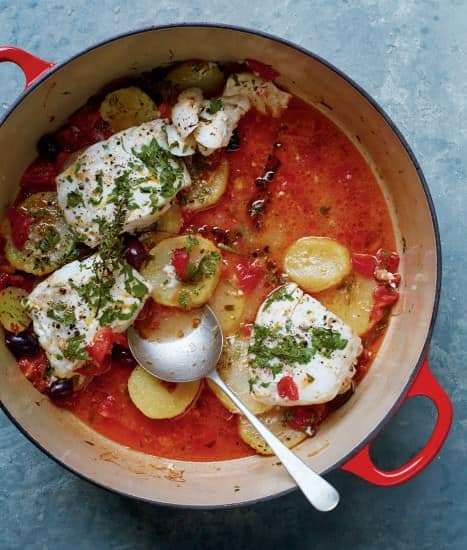Bistronomy: Recipes from the Best New Paris Bistros by Jane Sigal
 The next time you order a haricot verts salad with carefully selected seasonal produce or a fresh plate of creamy burrata from a small plates menu, just remember where it all started: Paris, France, 1992. In Bistronomy: Recipes from the Best New Paris Bistros (Rizzoli; September 22, 2015) author and highly regarded authority on French cuisine Jane Sigal brings us back to the beginning and traces the evolution of the Paris “neo-bistros” or Bistronomies, (bistro + gastronomies) providing wonderful recipes, anecdotes and photographs from the best kitchens in Paris.
The next time you order a haricot verts salad with carefully selected seasonal produce or a fresh plate of creamy burrata from a small plates menu, just remember where it all started: Paris, France, 1992. In Bistronomy: Recipes from the Best New Paris Bistros (Rizzoli; September 22, 2015) author and highly regarded authority on French cuisine Jane Sigal brings us back to the beginning and traces the evolution of the Paris “neo-bistros” or Bistronomies, (bistro + gastronomies) providing wonderful recipes, anecdotes and photographs from the best kitchens in Paris.
Yves Camdeborde (aka the father of bistronomy) wanted to create a restaurant where patrons could relax and enjoy life. Tired of the overly pretentious and stuffy French restaurants found in the premiere arrondisements, Camdeborde decided to try a new strategy: out with the fancy table linens, static menus and polished crystal—in with crisp peak produce, rotating menus and casual meals at the bar.
Sigal’s collection includes the most cutting-edge bistros in France such as Pirouette, Clown Bar and Le Comptoir, along with timelines of the bistronomy movement and fabulous charts highlighting retro vs. neo-bistro style. These include “Get the Look” (for instance old time bistros meant pendant lamps and handwritten menus, while neo-bistros now sport Edison bulbs, industrial lamps and printed menus on chalkboards.) There is also a “Bistro Decoder” with a tapas section for old time and neo-bistros. Tapas in the bistro days of yore meant hors d’oeuvres of foie gras terrine, while the bistros of the future boast small plates for sharing that can make up an entire meal.
Sigal does an exemplary job providing examples of the evolution of the French culinary scene, while also tapping into the foundations of French foods by including sections on food staples that will never change. (Check out the “Herb Primer” and “Rooting” sections for a crash course on lovage, chervil and fennel fronds).
Bistronomy menus don’t do away with tradition, they simply build upon bistro fare with flavors that you would never expect to find paired together in classic French cooking. Sigal knows the scene well and fully embraces new and innovative restaurants only found off the beaten path. Chefs are taking the starch out of tired French cooking and we couldn’t be more excited.
The following recipe is a traditional casserole with some fun new twists.
Cod en Cocotte with Tomatoes, Olives & Chorizo
Four Servings
2 medium Yukon Gold potatoes (12 ounces/350g total)
6 plum tomatoes, peeled, seeded, and chopped.
1 ½ ounces (45g) Spanish chorizo, cut into 1/8 inc (3mm) dice
12 small black olives, such as Nicoise, pitted
1 large garlic clove, chopped
Four 4 to 5 ounce (125-150g) skinned cod fillets
4 thyme sprigs
¼ cup (8g) chopped parsley
4 tablespoons (60g) unsalted butter, sliced
3 tablespoons extra-virgin olive oil
2 tablespoons fresh lemon juice
Sea salt and freshly ground pepper
Make Ahead
The casserole can be assembled and refrigerated for up to 4 hours before baking.
The current fondness for artfully composed plates has virtually killed the casserole, but La Rallonge chef Marine Thomas shares this cod in adorable mini cast-iron pots. I reconfigured her recipe to make one large family-style dish. All the flavors come together in the brief time it takes to cook the fish.
Heat the oven to 350 degrees (175 celsius). In a medium saucepan of boiling water, cook the potatoes until tender, about 20 minutes. Drain and let cool slightly, then peel and cut into slices ¼ inch (6 mm) thick.
In a medium enameled cast-iron casserole, spread the potato slices, tomatoes, chorizo, olives, and garlic. Set the fish on top and add the thyme, parsley, butter, oil and lemon juice. Season with salt and pepper. Cover and bring to a simmer on the stove, then transfer the pot to the oven and cook until the fish is just opaque throughout, 10 to 15 minutes. Serve directly from the casserole.







